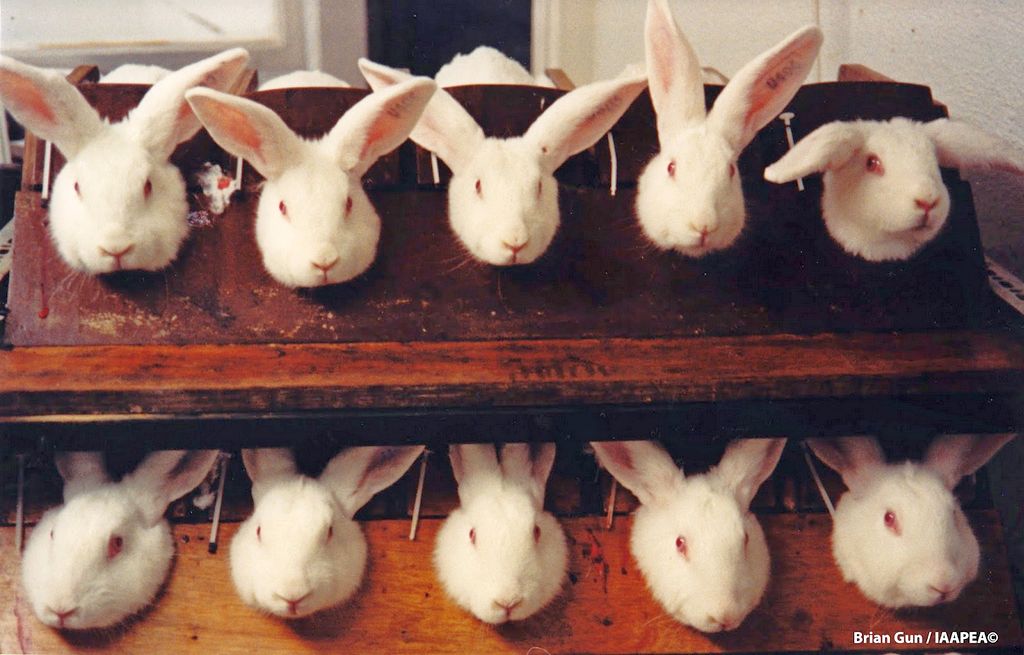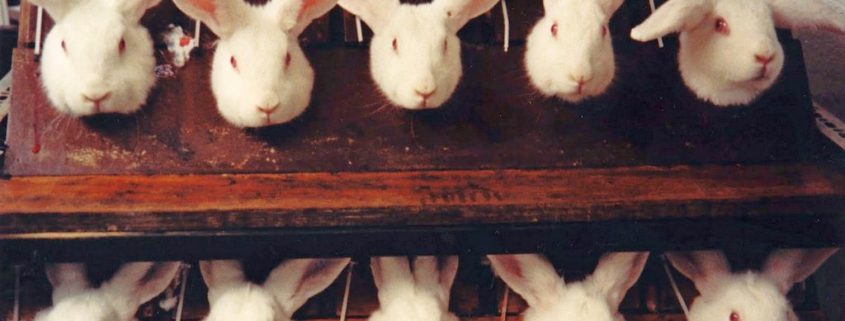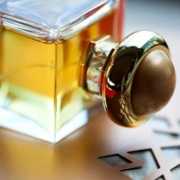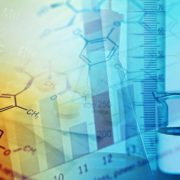Animal Testing in the Cosmetic Industry

When using or developing new components in their cosmetic products, such as perfumes, lipsticks, shampoos, and moisturizers, many manufacturers conduct tests on animals to assess if these ingredients are safe for humans. After the tests are done, the animals are killed, normally by neck-breaking, decapitation, or asphyxiation (suffocation due to the absence of oxygen), without providing any pain relief. Although this practice is cruel, outdated, and unnecessary in today’s fast-paced world, a huge number of animals are used in such testing worldwide, especially, mice, rats, and rabbits.
Ahead we’ll discuss some facts about cosmetics testing on animals. But before we get started, it’s important to learn what products are known as cosmetics. So, let’s get started.
Table of contents
-
What products are called cosmetics?
-
Why do some cosmetics manufacturers still use animal testing?
-
How do you know if your cosmetics are cruelty-free?
-
Is animal testing legally mandatory for cosmetics sold in the United States?
-
Where is cosmetics testing on animals banned?
-
What cosmetics tests are performed on animals?
-
Are there other arguments against testing on animals?
-
What are the alternatives to animal testing?
What products are called cosmetics?
All products that are intended to be applied to the human body for beautifying, cleansing, altering the appearance, or promoting attractiveness without affecting the body’s natural function and structure are considered cosmetics. Examples include perfume, nail polish, moisturizer, makeup (such as lipstick and mascara), hair products (such as shampoos, conditioners, and hairsprays), and sunscreen lotions among others.
Why do some cosmetics manufacturers still use animal testing?
While animal testing on cosmetics is banned in many countries, it is still prevalent in many other countries. In a recent report of January 2024, it is estimated that 78 percent of the top 50 cosmetics brands in the world still test their products on animals before launching. There are two main reasons: firstly, certain countries, such as China, may legally require cosmetics tested on animals before entering their markets. Secondly, certain harsh chemicals, like those found in perfumes, are seen as necessary to be tested on animals to ensure safety for human use.
However, the practice of animal testing is unethical and unnecessary in today’s tech-savvy world. There are many ultramodern non-animal testing methods available right away, such as sophisticated computer models and human cell-based tests, that can replace old and outdated cruel animal tests. Moreover, these modern testing methods are more reliable, less expensive, and faster.
How do you know if your cosmetics are cruelty-free?
There are hundreds of cruelty-free brands that do not test their ingredients, formulations, and finished products on animals. There is a “Leaping Bunny” logo that ensures that the products bearing this logo haven’t been tested on animals. You can simply download the free “Leaping Bunny” app, and keep animal testing products out of your shopping cart. Leaping Bunny-certified brands and products can be found in most beauty, pharmacy, department, and grocery stores.
Our company, La Via del Profumo, is too small to be mentioned in that app, but we guarantee that all our perfumes are composed only of essential oils, absolutes, and tincture, nothing else. Therefore, we guarantee that our perfumes are not tested on animals
Is animal testing legally mandatory for cosmetics sold in the United States?
A big no. According to the Food and Drug Administration (FDA) of the United States regulated act, the Federal Food, Drug, and Cosmetic Act, there is no requirement for animal tests to demonstrate that cosmetics are safe for human use.
The problem is that big companies do not want to lose the market shares represented by the countries that still require testing on animals. To satisfy that demand, they do the tests on animals, perhaps by commissioning them in outsourcing.
Where is cosmetics testing on animals banned?
First, in 2013, the European Union passed a law banning cosmetics testing on animals and also selling cosmetics tested on animals. Then Canada, India, Norway, Switzerland, Mexico, Chile, Israel, and Iceland have passed laws that prohibit testing cosmetics on animals and selling products tested on animals. Companies that conduct tests on animals are not permitted to sell their cosmetic products in these countries unless or until they change their practices. California, Illinois, Maine, Nevada, New York, Virginia, Washington, Hawai’i, Louisiana, Maryland, New Jersey, and Oregon have all passed similar laws to close the sale of animal-tested products. Australia, Guatemala, South Korea, Columbia, Turkey, Brazil, New Zealand, Ecuador, and Taiwan have also banned cosmetics testing on animals.
What cosmetics tests are performed on animals?
Several invasive tests are performed on rats, mice, guinea pigs, and rabbits. These may include:
Eye or skin irritation tests where chemicals are dripped into the eyes or rubbed onto the shaved skin without providing any pain relief.
Tests where chemical substances are given to mice or rats in high doses through repeated force-feeding. Researchers look for symptoms of general illness or specific health concerns such as birth defects or cancer. These tests last long, like months or sometimes even years.
“Lethal dose” tests. This test is widely condemned throughout the world. In this cruel test, rats are forcibly swallowed with a large amount of chemicals to determine the dose that causes death.
After tests are done, the animals are killed, normally by decapitation, neck-breaking, and asphyxiation (suffocation due to no oxygen), without providing any pain relief.
Are there other arguments against testing on animals?
Yes, there are scientific limitations on animal tests. Animals aren’t humans. When exposed to the same chemicals, they often respond differently, meaning the results scientists estimate could be inaccurate from the real-life hazards to people.
Moreover, results from animal tests may also vary even from one species to another, such as rats and mice, that are difficult to explain. Consumer safety cannot be guaranteed with these unreliable and inaccurate tests.
What are the alternatives to animal testing?
There are thousands of ingredients that have a long history of human use safely. These ingredients do not require any further tests. Innovative products can be made using these materials as well. In addition, around 50 non-animal ultramodern tests are available to date. For example, sophisticated computer model tests and human cell-based tests. These modern non-animal alternatives are more likely to mimic how humans respond to cosmetics, leading to more accurate predictions. Compared to animal tests, these modern tests are often faster and more cost-effective.
See also:
You can check our Guarantee of naturality
Side Effects of Chemical Perfumes
Danger Of Musk Ketone In Perfumes
Perfume Allergy: Symptoms, Causes, And Cure
Why Phthalates in Perfumes Are Dangerous?
What Does Hypoallergenic Mean?
























Leave a Reply
Want to join the discussion?Feel free to contribute!